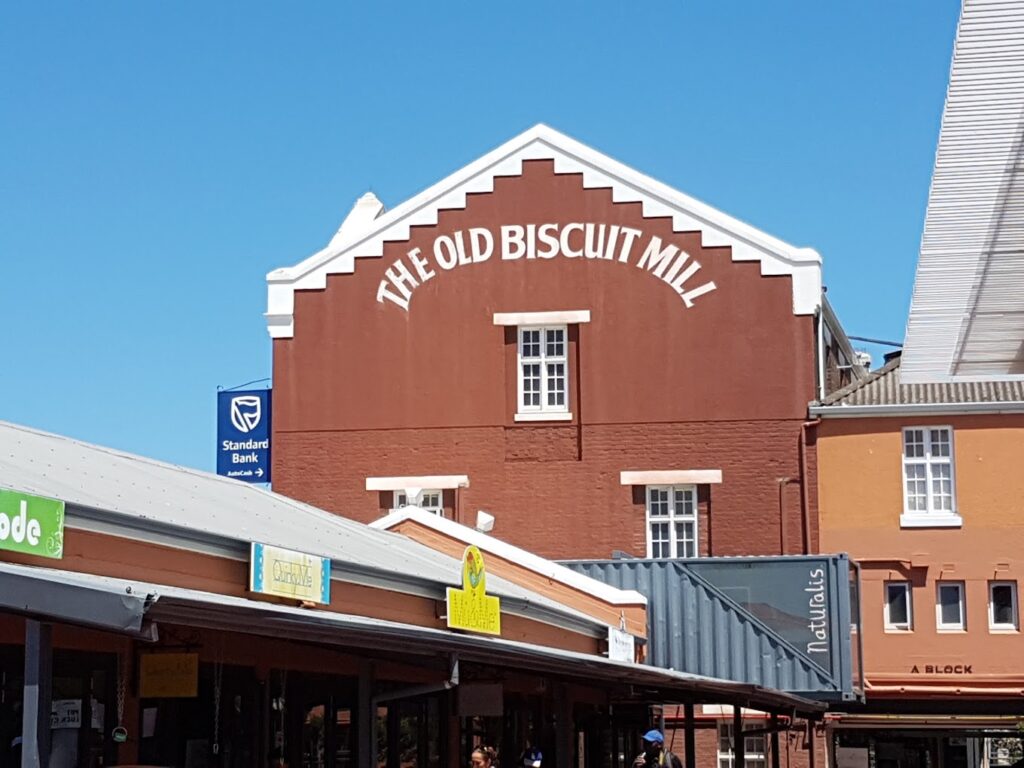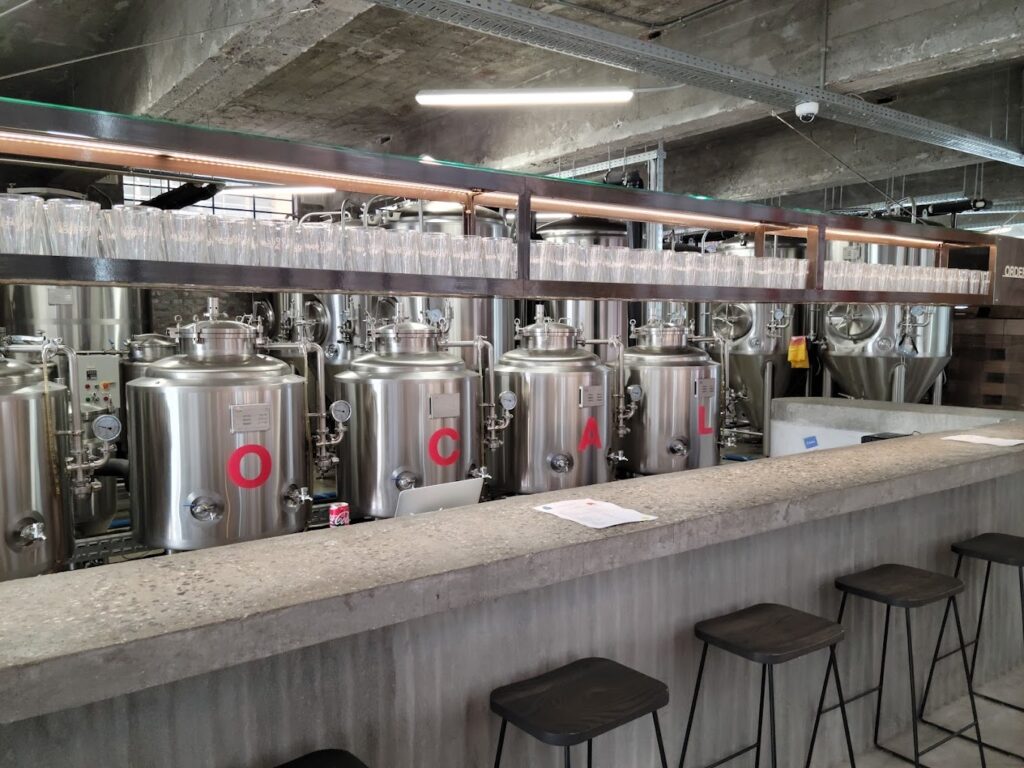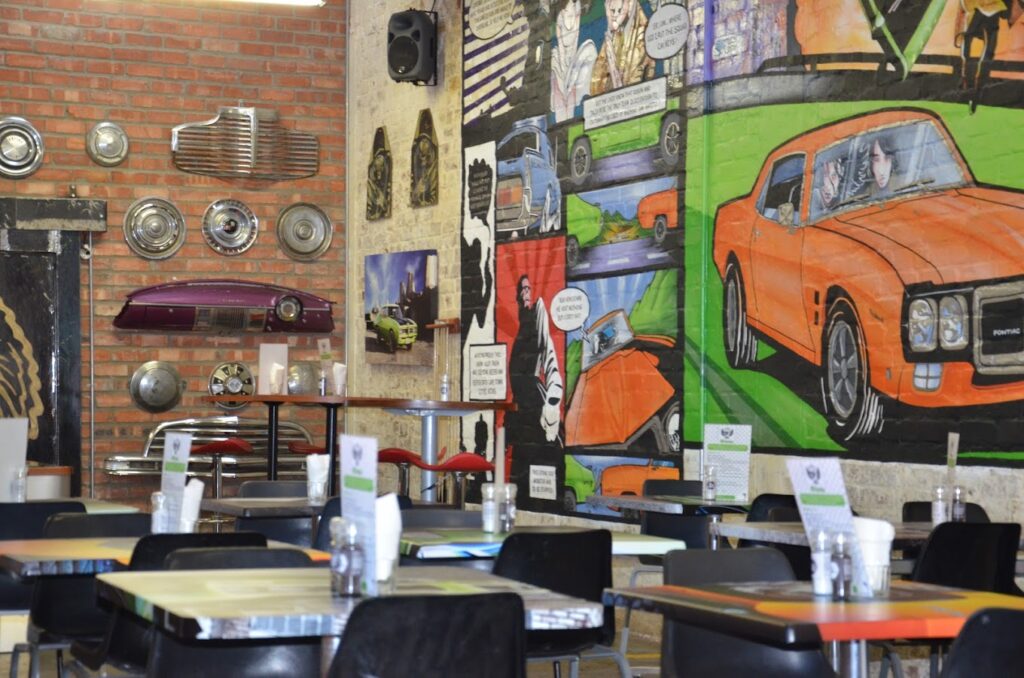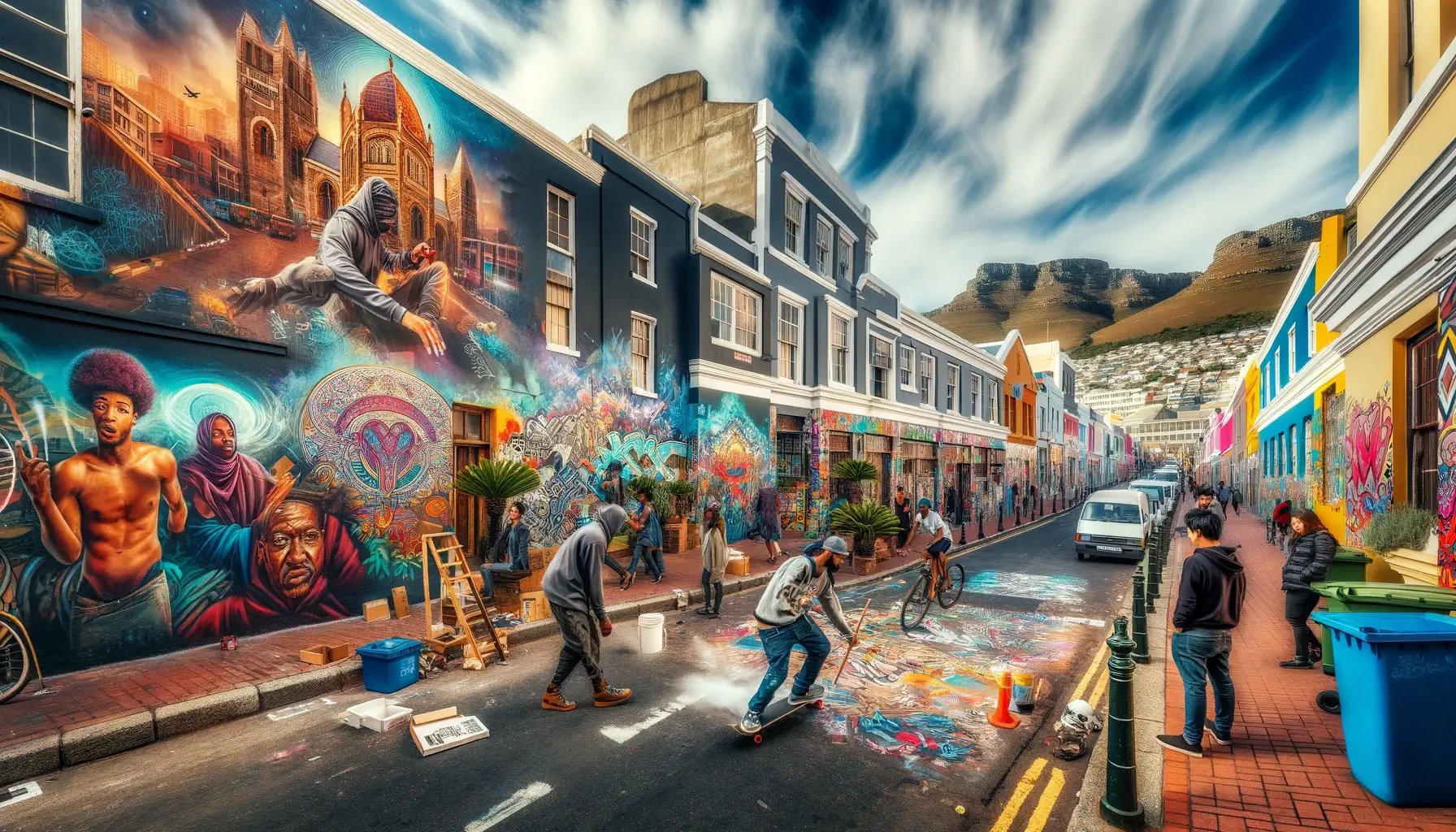Woodstock, one of Cape Town‘s oldest suburbs, has transformed into an artistic and culinary hotspot. Renowned for its vibrant street art, eclectic markets, and diverse culinary scene, Woodstock offers a unique experience blending historical heritage with contemporary urban culture. This comprehensive guide explores the best times to visit, top places to see, things to do, and major attractions, making it an essential read for anyone planning a visit to this dynamic neighborhood.
Best Time to Visit Woodstock:
- Spring and Early Summer (September to December): Enjoy warm weather and outdoor exploration.
- Late Summer and Autumn (January to April): Experience a quieter atmosphere with fewer tourists.
Best Places to Visit in Woodstock:
Here are some of the best places to visit in Woodstock:

- The Old Biscuit Mill: A popular hub in Woodstock, this vibrant space is home to day and night markets, dynamic office spaces, workshops, designer stores, delicious food stalls, and restaurants. The Neighbourgoods Market held here on Saturdays is a must-visit for food lovers and those looking to purchase artisanal goods.
- Woodstock Exchange: Known as the WEX, this is a creative hub where local artists, designers, and entrepreneurs showcase their work. It’s a great place to find unique South African art, fashion, and design products.
- Bromwell Boutique Mall: A chic and stylish boutique mall offering a range of luxury products, from fashion to art and interior design. The mall also hosts several upmarket eateries and coffee shops.
- Street Art and Murals: Woodstock is famous for its street art. Taking a walk through the streets, you’ll encounter a multitude of vibrant murals and graffiti that add a dynamic edge to the area. Guided tours are available for those interested in learning more about the street art scene.
- Woodstock Brewery: For craft beer enthusiasts, a visit to Woodstock Brewery is a must. They offer guided tours and tastings, allowing visitors to explore a range of locally brewed beers.
- Test Kitchen: Located in the Old Biscuit Mill, this internationally acclaimed restaurant by chef Luke Dale-Roberts offers an exceptional dining experience, though bookings are essential due to its popularity.
- Woodstock Cave: For the more adventurous, a hike up to Woodstock Cave on Devil’s Peak offers breathtaking views of the city. It’s a moderately challenging hike but well worth the effort.
- Palms Décor and Lifestyle Centre: This center is a treasure trove of home decor, lifestyle products, and antique furniture. It also hosts food markets and events.
- Guga S’Thebe Arts & Culture Centre: This community center in nearby Langa is dedicated to promoting African arts and culture. It’s a great place to experience local art, music, theater, and dance.
- Roodebloem Road Restaurants and Cafes: This street is lined with a variety of charming cafes, restaurants, and bars, offering everything from gourmet meals to casual eats.
- Victoria Road Shopping: For those looking to do some shopping, Victoria Road offers a mix of retail stores, from boutique fashion to local crafts.
- Art Galleries: Woodstock is dotted with numerous art galleries showcasing the work of local and international artists. Galleries like the Goodman Gallery, Stevenson Gallery, and Blank Projects are worth visiting.
Woodstock’s transformation from a run-down area to a thriving hub of creativity and entrepreneurship is a testament to Cape Town’s dynamic spirit. The suburb offers a blend of historical charm and contemporary cool, making it a fascinating area to explore for locals and tourists alike.
Things to Do in Woodstock:
Here are some exciting things to do in Woodstock:

- Explore The Old Biscuit Mill: This is a must-visit destination in Woodstock. It’s home to a range of designer stores, artisan bakeries, craft shops, and restaurants. The Neighbourgoods Market, held here every Saturday, is a food lover’s paradise, offering a range of local and international cuisine.
- Visit Art Galleries: Woodstock is known for its thriving arts scene. Explore various galleries like the Stevenson Gallery, Goodman Gallery, and the Whatiftheworld Gallery to see contemporary art from South African and international artists.
- Street Art Tour: Take a guided street art tour to see some of the suburb’s famous murals. Woodstock’s street art is a reflection of its cultural diversity and creative spirit.
- Woodstock Brewery: For craft beer enthusiasts, a visit to Woodstock Brewery is a great idea. They offer tours and tastings where you can learn about the brewing process and sample some unique local beers.
- Shopping at Woodstock Exchange: Known as the WEX, this space is a creative hub where local artists and entrepreneurs showcase their work. You can shop for unique art, fashion, and design products here.
- Dine at Trendy Restaurants: Woodstock offers a range of dining options, from fine dining at establishments like The Test Kitchen to more casual, yet still chic, cafes and bistros.
- Explore the Culinary Scene: Besides the Old Biscuit Mill, there are numerous other food markets and artisanal food stores in Woodstock. You can enjoy a variety of cuisines and fresh, locally-sourced ingredients.
- Attend Workshops and Classes: Look out for various workshops and classes held in the area, ranging from cooking classes, art workshops, to yoga and fitness sessions.
- Hiking to Woodstock Cave: For outdoor enthusiasts, a hike up to Woodstock Cave on Devil’s Peak offers not only a good workout but also stunning views of Cape Town.
- Visit the Bromwell Boutique Mall: This mall offers a range of luxury products, including art, fashion, and interior design items, in a chic and stylish setting.
- Coffee Shop Hopping: Woodstock has a thriving coffee culture with numerous cafes offering expertly brewed coffee and delicious baked goods.
- Live Music and Entertainment: Check out local bars and venues for live music and entertainment, especially on weekends.
Major Tourist Attractions:
- Bromwell Boutique Mall: For an upscale shopping experience.
- Palms Décor and Lifestyle Centre: A mix of lifestyle shops and a vibrant weekend market.
- Woodstock Brewery: A haven for craft beer enthusiasts.
- Roodebloem Road: Famous for its Victorian architecture and charming eateries.
- Art Galleries: Immerse in contemporary art at various local galleries.
A Closer Look at Woodstock’s Urban Tapestry:
- Street Art and Murals: Woodstock’s streets are a canvas showcasing vibrant artworks that tell stories of history, culture, and identity.
- Culinary Delights: A melting pot of flavors, the suburb’s culinary scene is a testament to its cultural diversity and creativity.
- Shopping and Lifestyle: From vintage finds to designer wares, Woodstock’s shopping scene caters to all tastes.
- Historical and Cultural Attractions: The suburb’s transformation from a neglected area to a creative hub is evident in its blend of historic buildings and modern enterprises.
Accommodation and Travel Tips:
- Stay in Style: Choose from boutique hotels and cozy guesthouses that mirror the artistic vibe of Woodstock.
- Getting Around: The suburb is well-connected, but taxis and ride-sharing services are recommended for convenience.
- Safety First: Be mindful of personal safety, especially during evening hours.

Community Engagement:
- Participate in Local Initiatives: Engaging with community projects offers insights into the area’s cultural fabric and supports local development.
History of Woodstock
The history of Woodstock, one of the oldest suburbs in Cape Town, South Africa, is rich and multifaceted, reflecting a journey through colonialism, industrialization, apartheid, and urban renewal. Here’s a brief overview:
- Early History and Name Origin: Woodstock’s origins date back to the late 17th century. Initially, it was a farming area known for its timber used for building, which likely influenced its name. It was originally a separate village called Papendorp, named after Pieter van Papendorp, a settler in the area.
- 19th Century – Industrialization: In the 19th century, Woodstock began to transform from a coastal suburb of farms and estates to a more industrialized area. The construction of a railway line to Cape Town contributed significantly to its development. Woodstock became known for its factories and mills, particularly in textiles.
- Early 20th Century – Urban Expansion: As Cape Town expanded, Woodstock became more urbanized. It was one of the few areas where people of different races lived together, despite the growing momentum of racial segregation in South Africa.
- Mid-20th Century – Apartheid Era: During the apartheid era, Woodstock’s diverse community was affected by the Group Areas Act, which designated certain areas for specific racial groups. However, unlike District Six, another mixed community in Cape Town, Woodstock was not subjected to forced removals on a large scale, mainly because it was seen as a “grey area” suitable for mixed communities.
- Late 20th Century – Decline and Neglect: Post-apartheid, Woodstock experienced decline and neglect. Many businesses moved out, and the area became rundown, with an increase in crime and poverty.
- 21st Century – Revitalization and Gentrification: In recent years, Woodstock has undergone significant revitalization. It has become a trendy area known for its urban art, hip cafes, and vibrant cultural scene. However, this renewal has also brought challenges of gentrification, with rising property prices and concerns about the displacement of long-term residents.
- Cultural and Artistic Hub: Today, Woodstock is recognized for its street art, galleries, and creative spaces, becoming a hub for artists and designers. Landmarks like The Old Biscuit Mill and the Woodstock Exchange are prime examples of its urban renewal.
Woodstock’s history is a microcosm of Cape Town’s broader socio-political narrative, showcasing a community that has experienced significant transformation over the years. This history contributes to its unique character, blending historical charm with contemporary dynamism.
Woodstock is a neighborhood where tradition and innovation intersect, offering a rich tapestry of experiences for travelers. From its artistic streets to its culinary delights, every corner of Woodstock exudes character and charm. Whether you’re seeking artistic inspiration, culinary adventures, or a unique urban experience, Woodstock in Cape Town is a destination that promises an unforgettable journey
